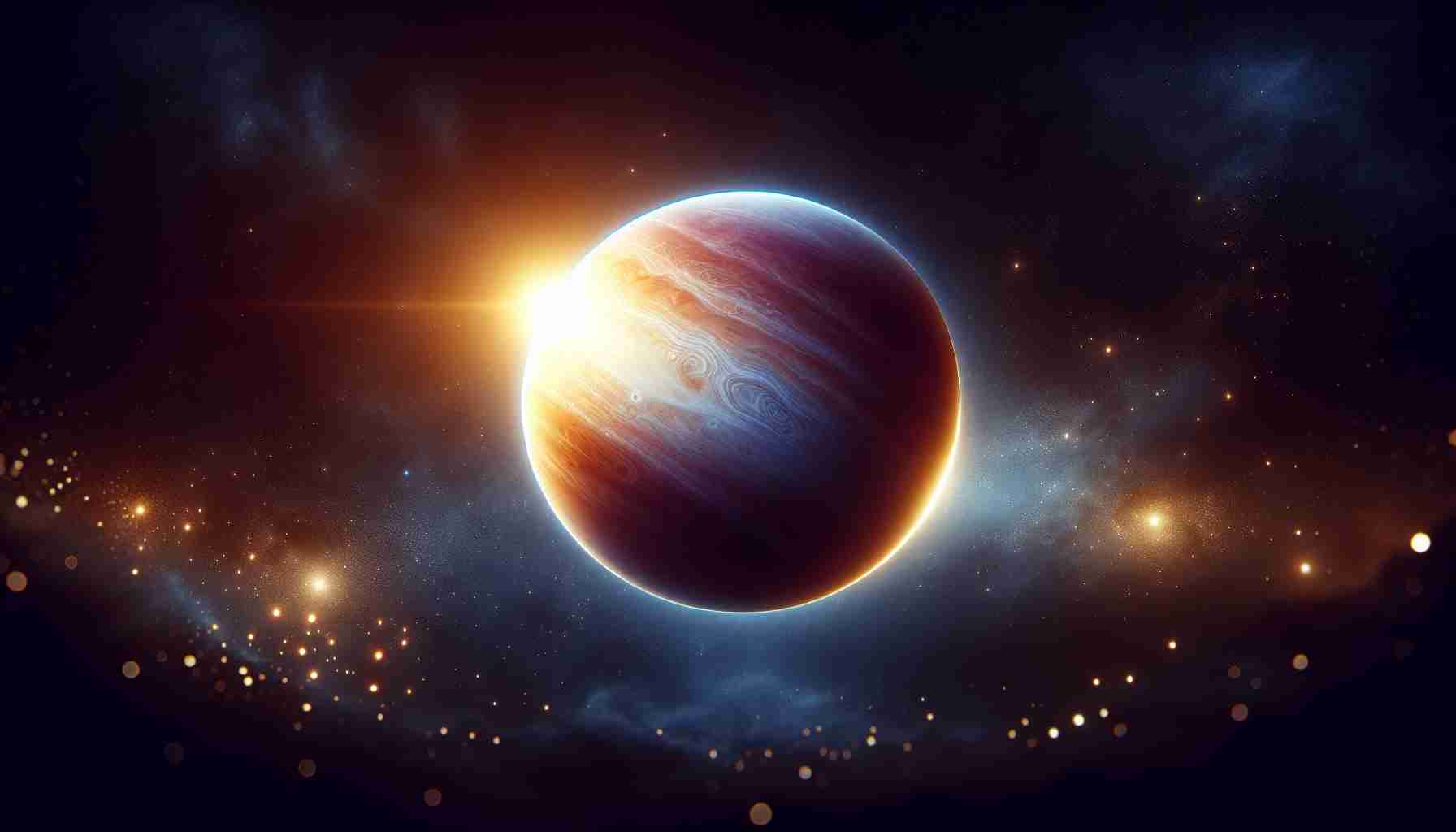- Venus will be incredibly bright on Sunday, outshining all stars and planets except the moon, with a magnitude of -4.6.
- This spectacle occurs as Venus moves closer to Earth, with its reflective clouds enhancing its luminosity.
- Though not fully illuminated, Venus shines brightest in its crescent phase due to optimal proximity to Earth.
- Dubbed Earth’s “evil twin,” Venus shares similar size and structure with Earth but has extreme temperatures due to intense greenhouse effects.
- Don’t miss this cosmic display, as the next opportunity won’t come until 2025.
- The event highlights Venus’ enchanting allure and invites viewers to connect with the universe’s wonders.
Prepare to cast your eyes upward and be captivated. On Sunday, Venus will strut its celestial brilliance, stealing the spotlight from all other stars and planets, with only the moon rivaling its glow. Its luminous presence, often mistaken for an otherworldly visitor, will shine at a staggering magnitude of -4.6, painting the sky with a beacon that defies the darkness.
This dazzling spectacle unfolds as Venus draws closer to Earth, a dance choreographed by the cosmos. Shrouded in thick, reflective clouds, Venus becomes an even more radiant gem, a pearl against the inky backdrop of space. These clouds mirror sunlight with extraordinary efficiency, magnifying Venus’ luminance to a breathtaking zenith.
Strikingly, Venus does not shine at its brightest when fully illuminated. Instead, its phase and proximity to Earth orchestrate its luminous orchestration. In its crescent phase, the planet looms larger, casting a spell of brilliance that captivates stargazers.
Historically dubbed Earth’s “evil twin,” Venus mirrors our planet in size and structure yet diverges with a scorching surface, thanks to a voracious greenhouse effect. Its blistering 900-degree-Fahrenheit temperatures starkly contrast the serene glow it gifts the night sky.
Miss this cosmic display, and you’ll have to wait until 2025 for another encore.
As night descends this weekend, let Venus enchant you, reminding us of the enigmatic beauty that lies beyond our terrestrial confines. Embrace the chance to glimpse a rare wonder, for it is moments like these that reconnect us with the vast tapestry of the universe. Look up, and in the brilliance of Venus, find a spark of celestial magic.
The Night Sky’s Showstopper: Witness Venus at Its Brightest
How-To Steps & Life Hacks for Observing Venus
1. Timely Observation: To get the best view, start observing just after sunset. Venus will be prominent in the western sky.
2. Use Binoculars: While Venus is visible to the naked eye, binoculars can enhance your view, revealing its crescent phase more clearly.
3. Stable Surface: If using a telescope or binoculars, ensure you have a stable surface to reduce shaky images.
4. Avoid Light Pollution: Choose a location away from city lights for a more vivid display.
Real-World Use Cases
– Educational Outreach: Utilize this event for educational purposes. Host stargazing nights at schools or community centers to teach about planetary orbits and phases.
– Tourism Boost: Planetarium and observatory businesses can promote this spectacle to attract more visitors.
Market Forecasts & Industry Trends
– Astrotourism: There is a growing trend in “astrotourism,” where enthusiasts travel to locations with clear skies for stargazing events.
– Telescope Market: The demand for beginner telescopes spikes during celestial events, potentially boosting telescope sales.
Reviews & Comparisons
– Venus vs. Other Celestial Events: While eclipses and meteor showers draw significant attention, Venus’ brightness and prominence make it unique, as it’s less fleeting and unpredictable.
Controversies & Limitations
– Light Pollution: In urban areas, light pollution can obscure the view, diminishing the impact of Venus’ display.
– Misinterpretation: Its brightness often leads to UFO reports, highlighting the need for public awareness.
Features, Specs & Pricing of Observation Equipment
– Binoculars: Basic stargazing binoculars start from $50. Look for specifications like a 10x magnification for an optimal experience.
– Telescopes: Entry-level telescopes for planetary observation start around $150.
Security & Sustainability
– Safe Viewing: Venus is safe to view without any eye protection, unlike solar observations.
– Eco-Friendly Approach: Encourage eco-friendly practices, such as carpooling to observation sites.
Insights & Predictions
– Future Events: The next opportunity to see Venus this bright won’t occur until 2025, making this weekend special.
– Long-Term Interest: Interest in Venus could spark more public engagements with space exploration and celestial events.
Tutorials & Compatibility
– Astrophotography Tips: For those keen on capturing Venus, use a DSLR camera with a tripod. Set to low ISO and long exposure, adjusting as needed.
– App Assistance: Use apps like SkySafari or Star Walk to track Venus’ position and get live updates.
Pros & Cons Overview
Pros:
– Brilliant celestial event that is easy to view.
– Promotes interest in astronomy and science.
Cons:
– Requires clear skies and minimal light pollution for best visibility.
– Can lead to misconceptions or false UFO reports.
Actionable Recommendations
– Ensure compliance with local guidelines if organizing a group stargazing event.
– Leverage the event to inspire discussions on planetary science and climate change, referencing Venus’ extreme greenhouse conditions.
Use this opportunity to reconnect with the wonders of our universe. Step outside, look up, and let the captivating glow of Venus remind you of the celestial marvels waiting to be discovered. For more information and educational resources, visit NASA.




















